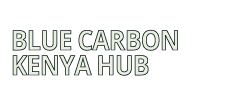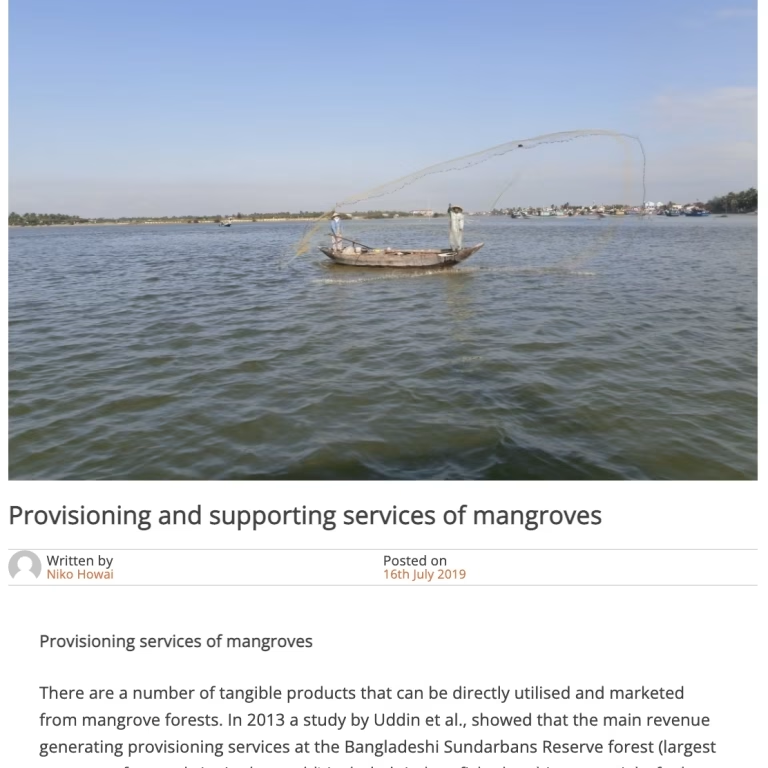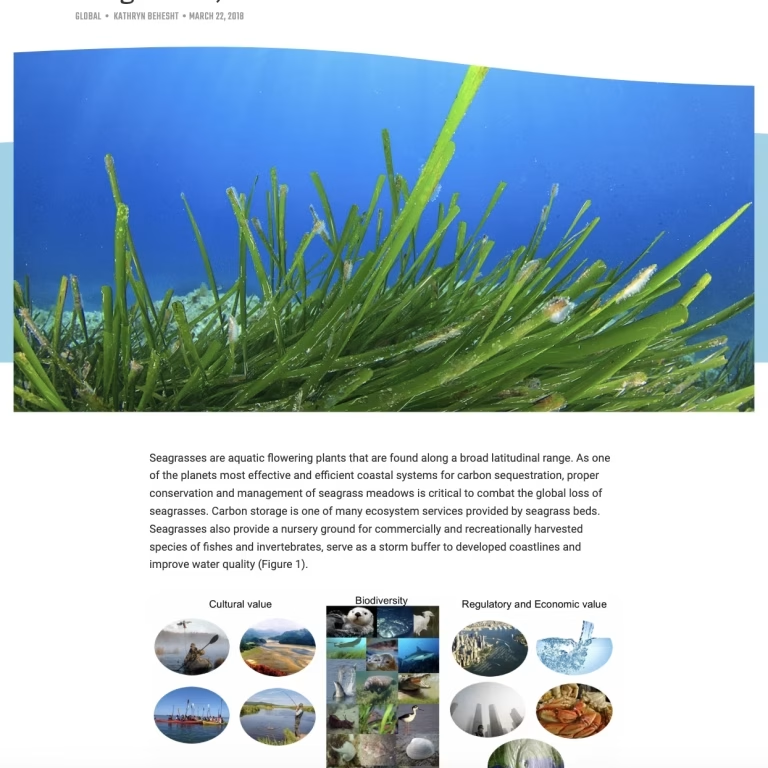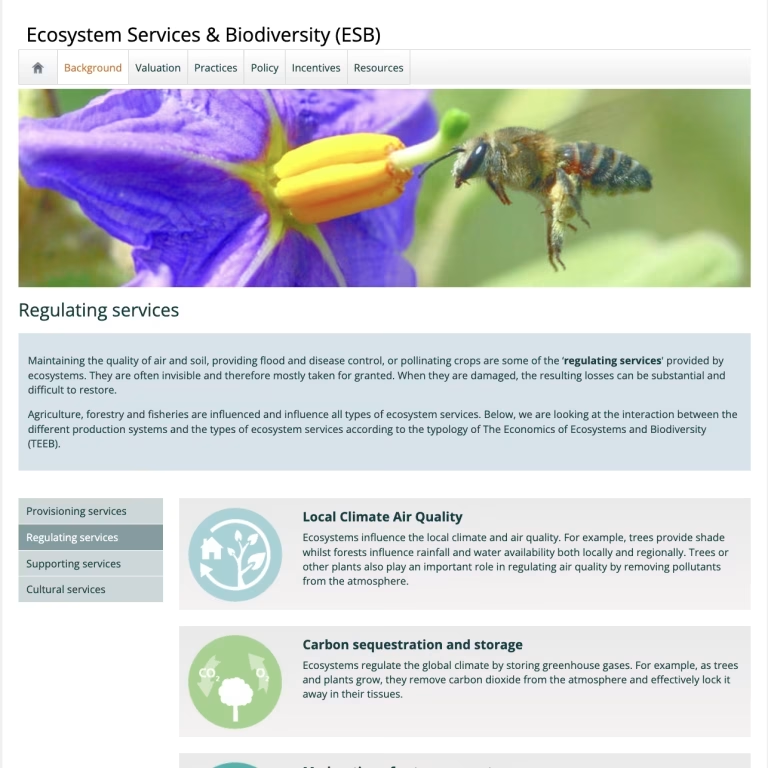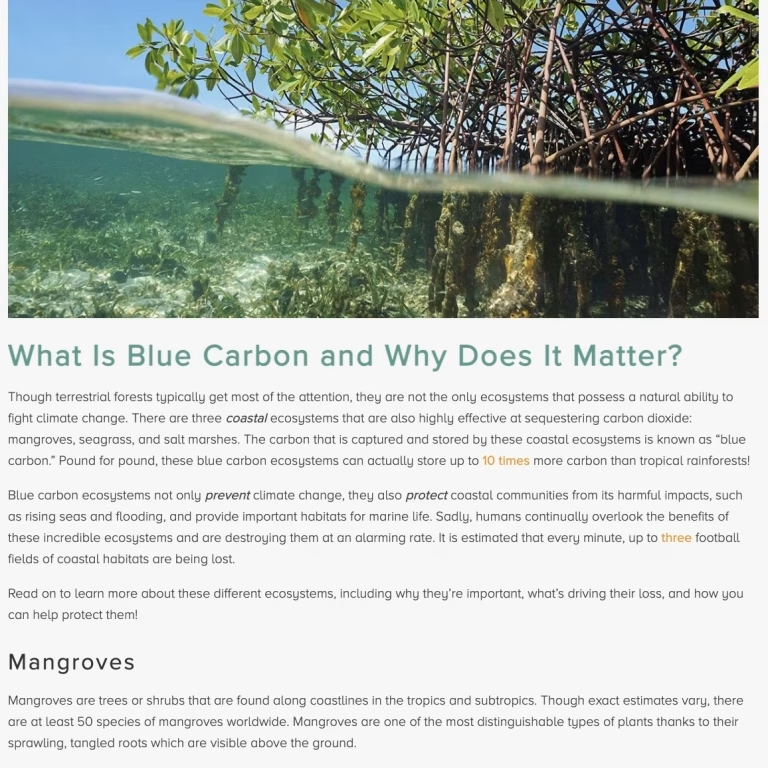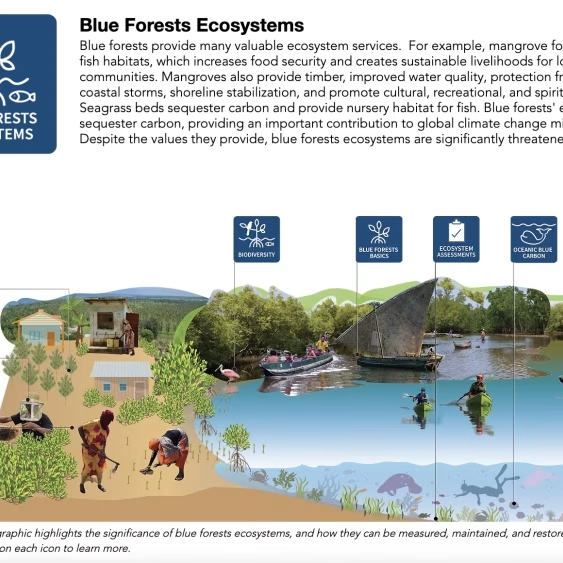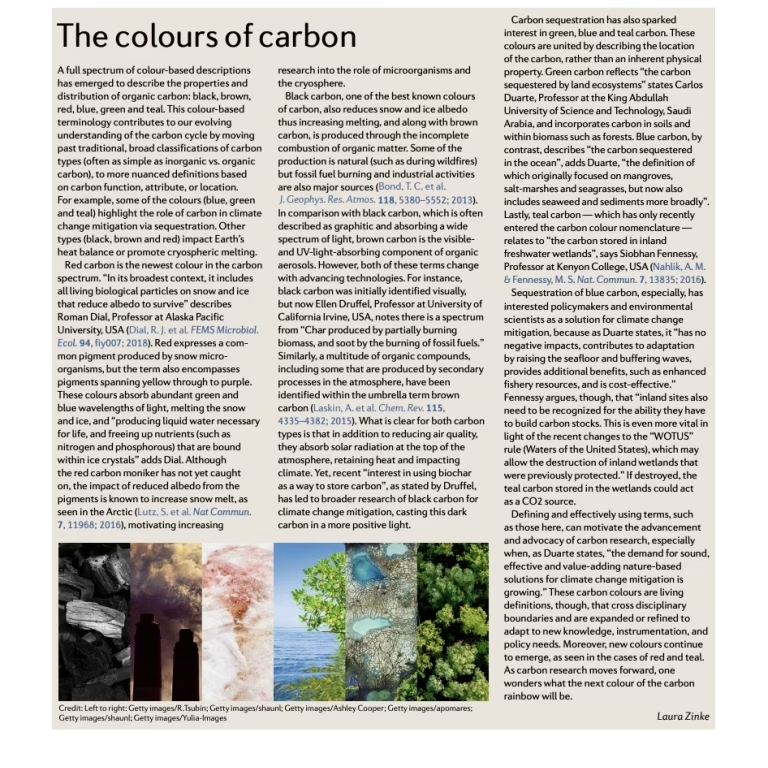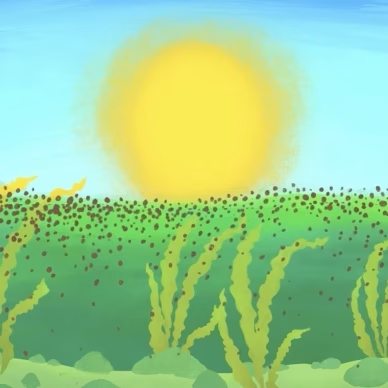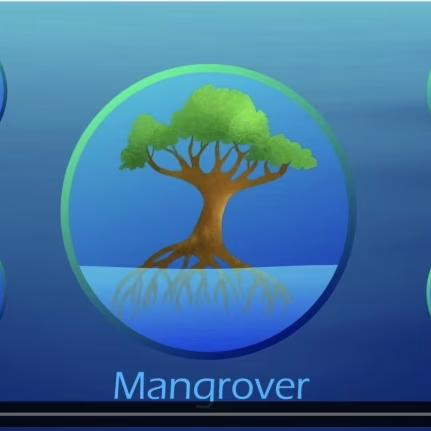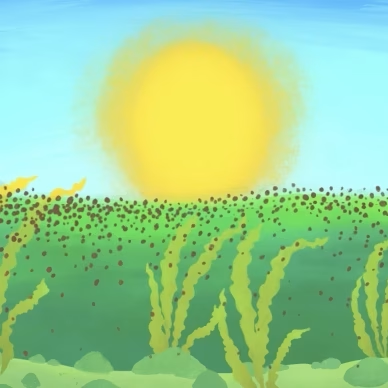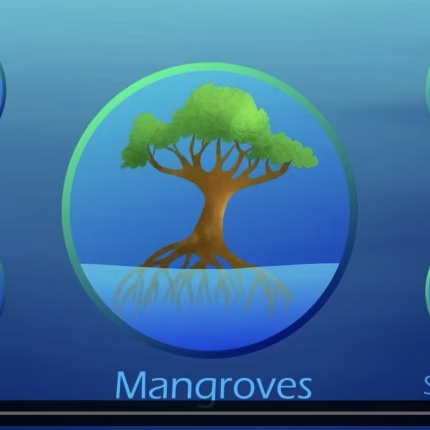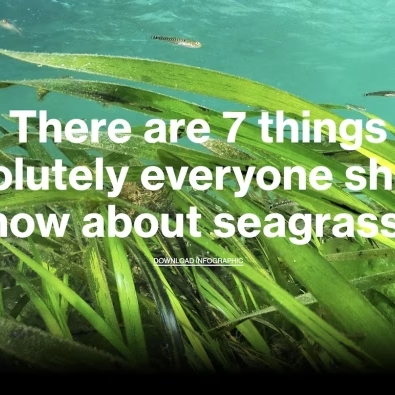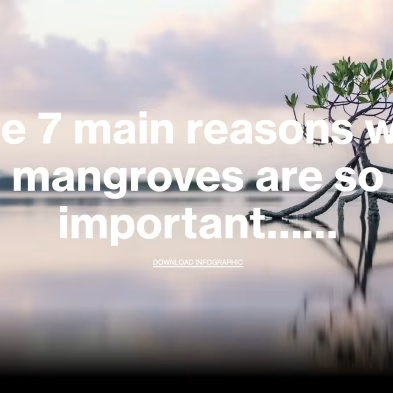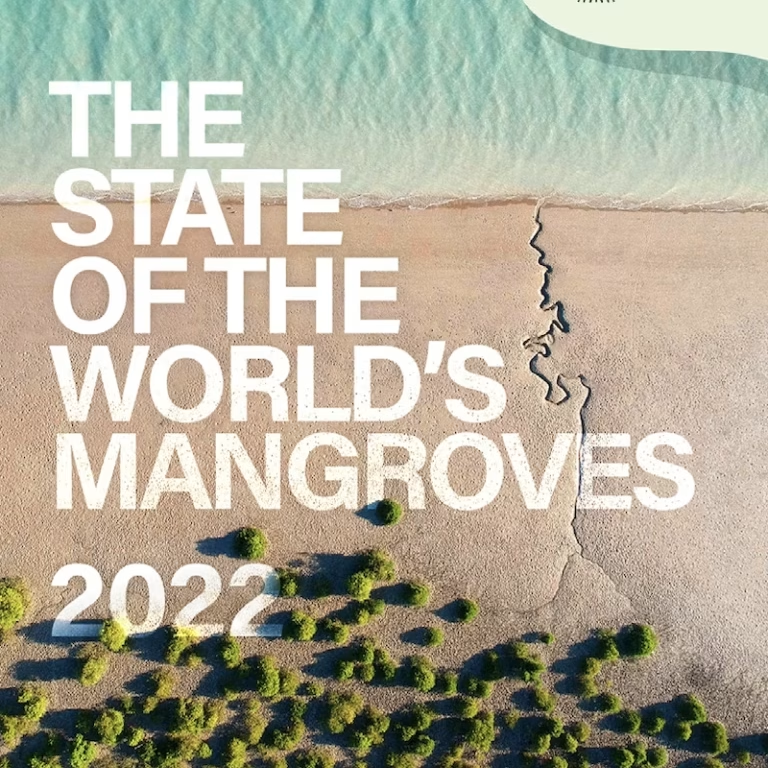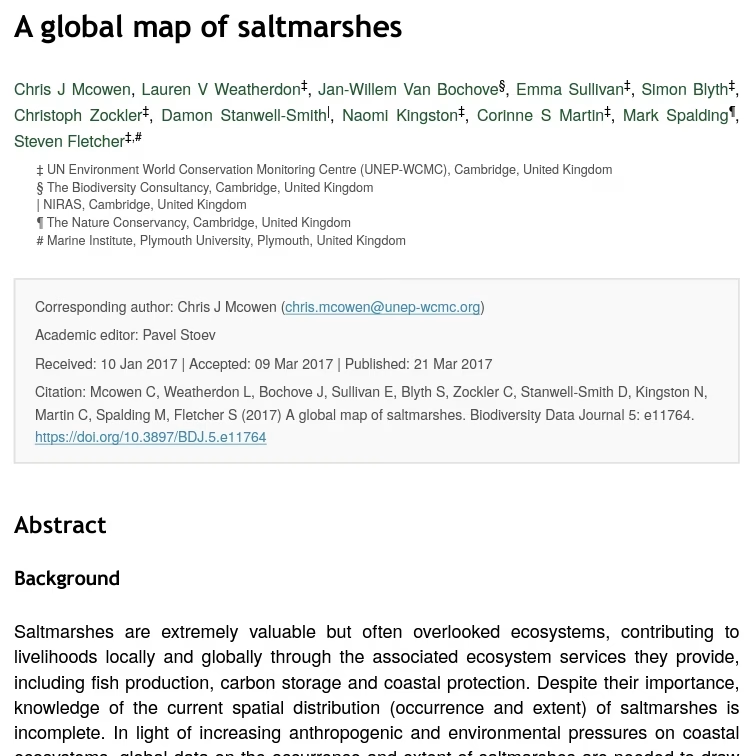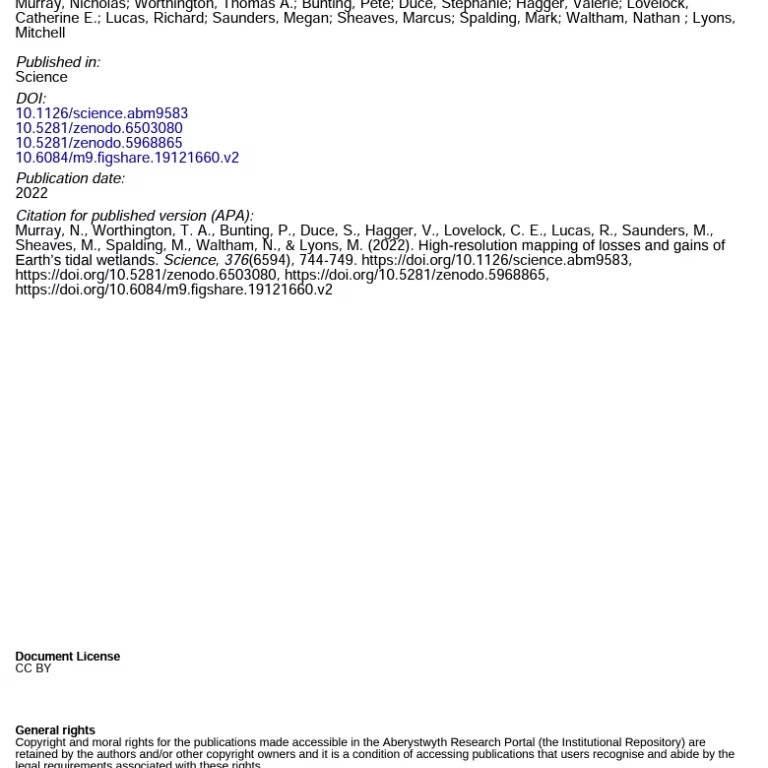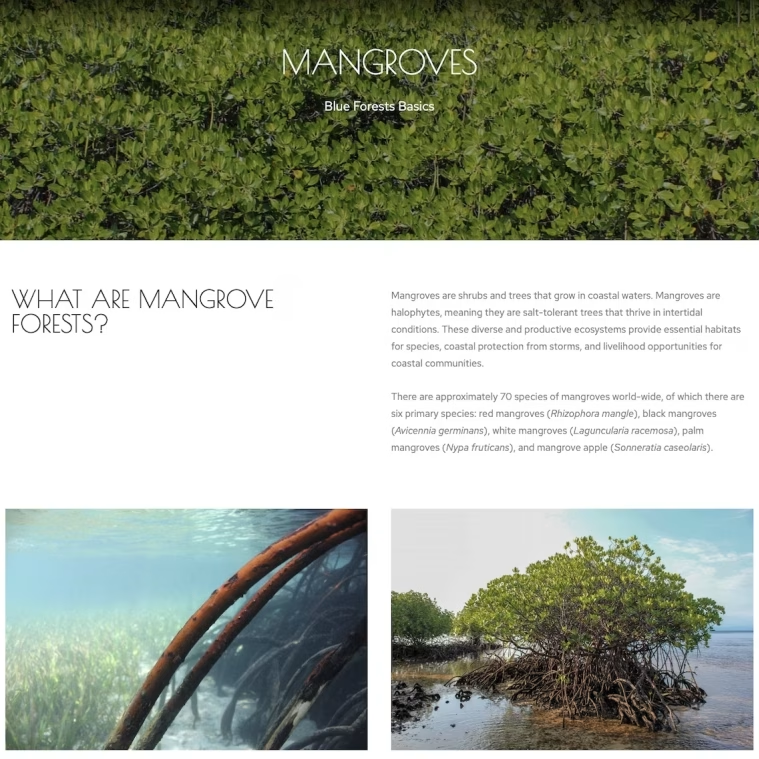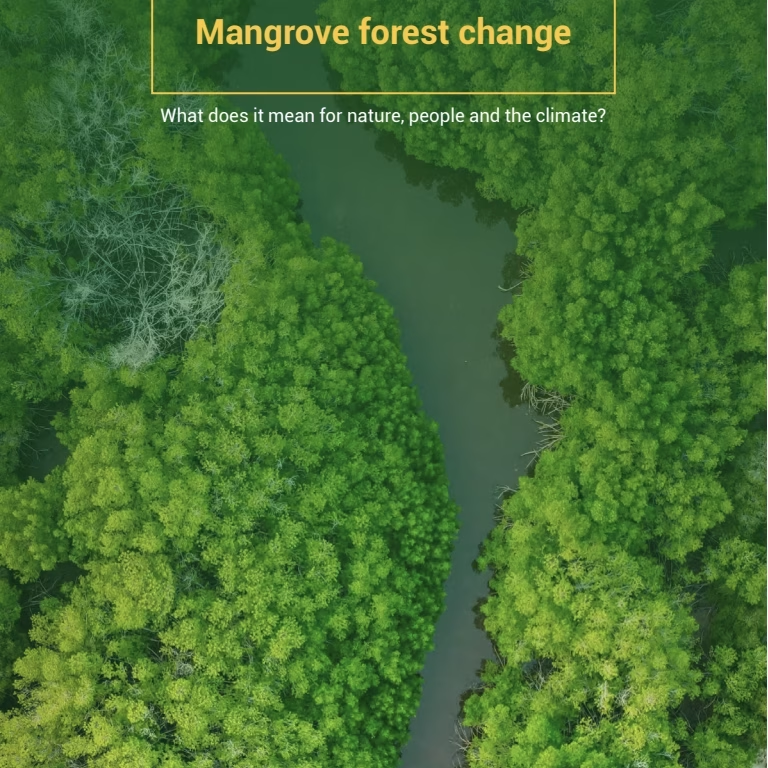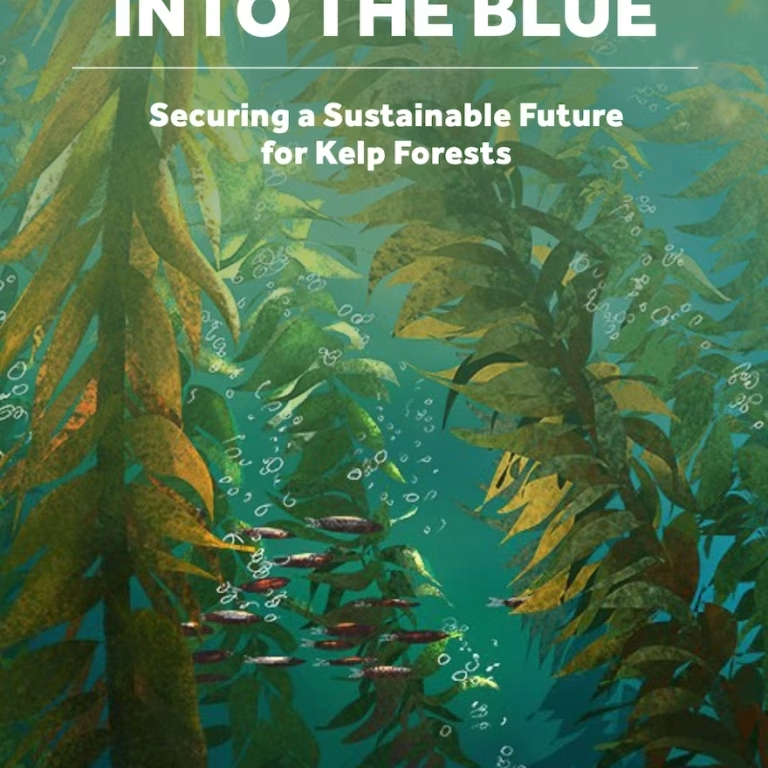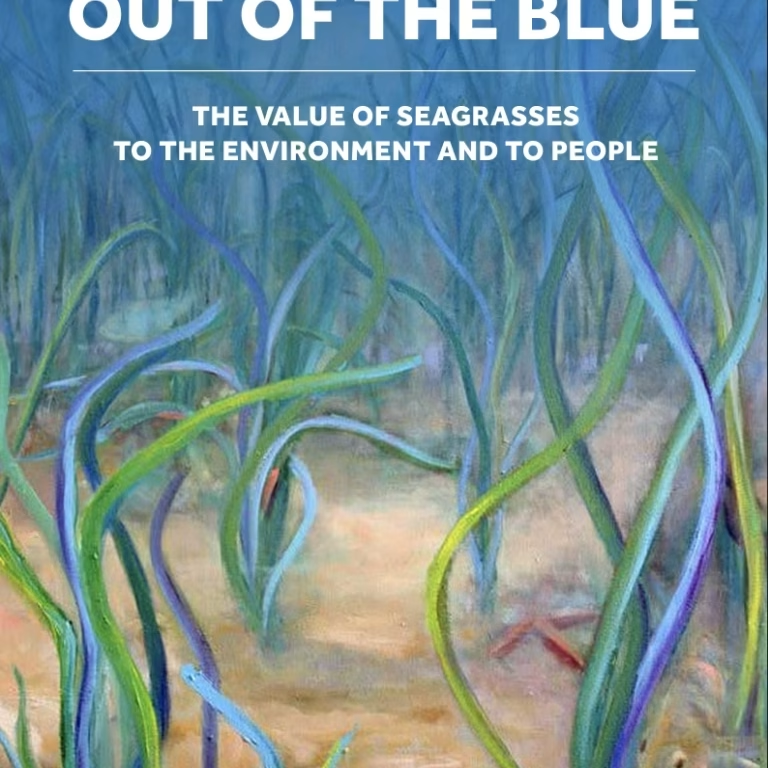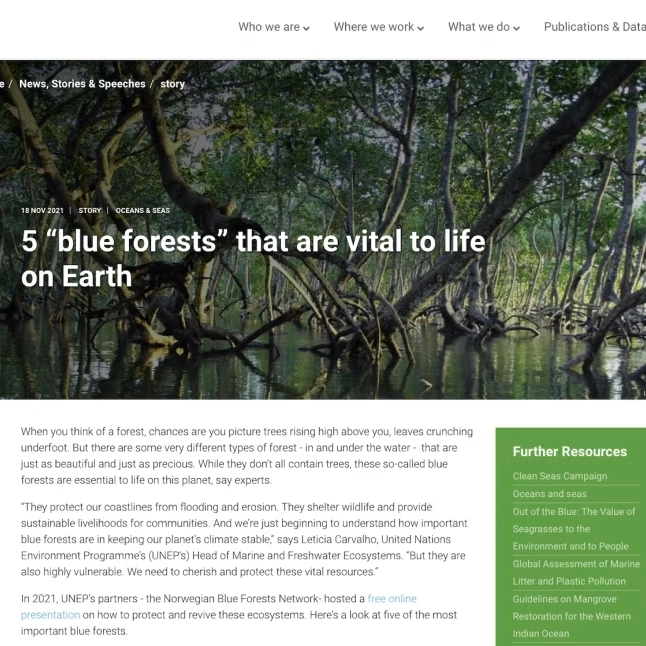Resource Library
- All
- Further Reading
- Infographic
- Map
- Online Article
- Online Exercise
- Photo
- Report
- Scientific Article
- Story Map
- Teaching Material
- Tools
- Video
- Website
Provisioning and Supporting Services of Mangroves
There are a number of tangible products that can be directly utilised and marketed from mangrove forests.
Seagrasses, Nature’s Water Filter
In many systems, vegetated estuarine habitats such as salt marshes and seagrass beds act as a natural water filtration system—where sediment and nutrient-rich water flows in and cleaner water flows out. Seagrasses are capable of both increasing the pH and concentration of dissolved oxygen in the water overlying the seagrass.
Protecting Ecosystem Services and Biodiversity
Ecosystem services are the engine of the environment. They are essential to life. Land, water, air, climate and genetic resources must be used responsibly if they are to also benefit future generations. This resource describes the four types of ecosystem services (regulating, supporting, provisional, and cultural) and how they support biodiversity
What Is Blue Carbon and Why Does It Matter?
Though terrestrial forests typically get most of the attention, they are not the only ecosystems that possess a natural ability to fight climate change. There are three coastal ecosystems that are also highly effective at sequestering carbon dioxide: mangroves, seagrass, and salt marshes.
What are Blue Forests Ecosystems, and how are They Measured, Maintained, and Restored?
Blue forests provide many valuable ecosystem services. For example, mangrove forests provide fish habitats, which increases food security and creates sustainable livelihoods for local communities. Despite the values they provide, blue forests ecosystems are significantly threatened worldwide. Read more to learn how these ecosystems can be measured, monitored, and even restored.
The Colors of Carbon
A full spectrum of colour-based descriptions has emerged to describe the properties and distribution of organic carbon: black, brown, red, blue, green and teal. This colour-based terminology contributes to our evolving understanding of the carbon cycle by moving past traditional, broad classifications of carbon types (often as simple as inorganic vs. organic carbon), to more…
Hva truer blå skog i Norge?
Blåskog forsvinner i et alarmerende tempo rundt om i verden, hovedsakelig på grunn av menneskelige påvirkninger og klimaendringer. Se videoen for å lære mer om de underliggende årsakene til truende blå skoger, og hvordan disse trendene kan snus.
Hva er blå skog?
Blå skog – ålegressenger, mangroveskoger, tareskoger, tang og tidevannseng-og sump – er kyst- og marineøkosystemer som binder karbon og gir en mengde økosystemtjenester. Se videoen for å lære mer om hvor produktive disse økosystemene er, og hvor de kan finnes.
How are Blue Forests Threatened in Norway?
Blue forests around the world are disappearing at an alarming rate mostly due to human impacts and climate change. Watch to learn more about the underlying causes threatening blue forests, and how these trends can be reversed.
What are Blue Forests?
Blue forests – seagrass meadows, mangrove forests, kelp forests, rockweed, and salt marshes – are coastal and marine ecosystems that sequester carbon and provide a multitude of ecosystem services and co-benefits. Watch to learn more about how productive these ecosystems are, and where they can be found.
The Magic of Seagrass
A toolkit to help raise awareness of seagrass — the ocean’s wild savannas. Use the Toolkit to help inspire seagrass protection and restoration
The Magic of Mangroves
A toolkit to help raise awareness of mangroves — the world’s most important trees. Use it to help inspire mangrove protection and restoration.
The State of the World’s Mangroves 2022
Mangroves are now widely valued, for their biodiversity and for their contribution to human society, both locally and globally. The Global Mangrove Alliance (GMA) is striving to increase visibility of these essential ecosystems and to set ambitious goals for their conservation and restoration.
A Global Map of Saltmarshes
Saltmarshes are extremely valuable but often overlooked ecosystems, contributing to livelihoods locally and globally through the associated ecosystem services they provide, including fish production, carbon storage and coastal protection. Despite their importance, knowledge of the current spatial distribution (occurrence and extent) of saltmarshes is incomplete. In light of increasing anthropogenic and environmental pressures on coastal…
High-Resolution Mapping of Losses and Gains of Earth’s Tidal Wetlands
Tidal wetlands are expected to respond dynamically to global environmental change, but the extent to which wetland losses have been offset by gains remains poorly understood. We developed a global analysis of satellite data to simultaneously monitor change of three highly interconnected intertidal ecosystem types—tidal flats, tidal marshes and mangroves—from 1999 to 2019.
What are Mangrove Forests?
Mangroves are shrubs and trees that grow in coastal waters. Mangroves are halophytes, meaning they are salt-tolerant trees that thrive in intertidal conditions. These diverse and productive ecosystems provide essential habitats for species, coastal protection from storms, and livelihood opportunities for coastal communities.
Decades of Mangrove Forest Change: What does it mean for nature, people and the climate?
Encouragingly, over recent years the global loss of mangroves has largely stabilised, and gains have occurred in and around many of the world’s large rivers, estuaries and deltas. These findings are based on satellite imagery, and as such local conditions and extent may differ, it is therefore important to also utilise local knowledge and field…
Into the Blue: Securing a Sustainable Future for Kelp Forests
Covering a quarter of the world’s coastlines, kelp forests are one of the most widespread and valuable marine ecosystems on the planet, providing a range of important ecological, economic, and cultural benefits.
Out of the Blue: The value of seagrasses to the environment and to people.
Seagrasses form extensive underwater meadows, creating complex, highly productive and biologically rich habitats. Seagrasses also play a significant role in providing a plethora of highly valuable ecosystem services that greatly contribute to the health of the world’s ecosystems, human well-being and the security of coastal communities.
5 “Blue Forests” That are Vital to Life on Earth
When you think of a forest, chances are you picture trees rising high above you, leaves crunching underfoot. But there are some very different types of forest – in and under the water – that are just as beautiful and just as precious. While they don’t all contain trees, these so-called blue forests are essential…
